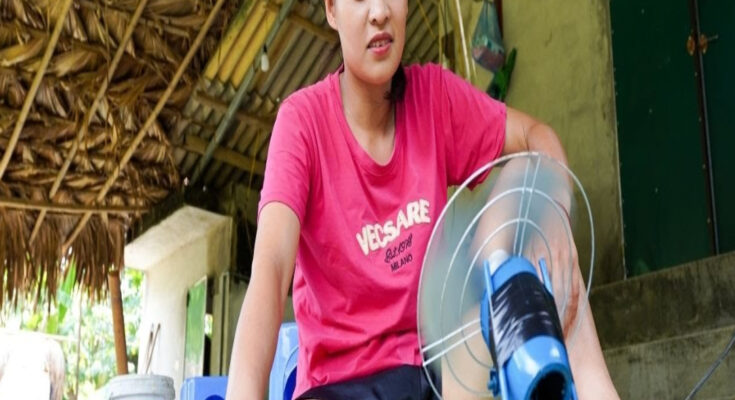I don’t have the ability to browse the internet or access real-time content like videos. However, I can certainly describe the process of finding bamboo shoots in a forest!
When searching for bamboo shoots, people typically venture into forests where bamboo grows. Here’s a general outline of what the process might involve:
1. **Choosing the Location**: Bamboo shoots are often found in forests with mature bamboo plants. Different species of bamboo grow in various regions worldwide, so the specific type of bamboo and the location will vary.
2. **Identifying the Shoots**: Bamboo shoots emerge from the ground and can be spotted by their distinctive shape and appearance. They are usually cone-shaped with a pointed tip and a smooth outer layer.
3. **Harvesting**: Carefully digging around the shoot with a tool like a spade or a bamboo knife to unearth it without damaging the shoot or the roots is important. The shoots are delicate, and excessive damage to the plant can affect its growth.
4. **Preparing**: Bamboo shoots need to be prepared properly before consumption. This often involves peeling away tough outer layers, slicing them, and sometimes boiling or soaking them to remove bitterness.
5. **Cooking**: Bamboo shoots are used in various cuisines worldwide. They can be stir-fried, boiled, pickled, or used in soups and stews. Cooking methods can vary based on regional preferences and culinary traditions.
While I can’t show you a video, I hope this description gives you an idea of what the process might look like! If you’re interested in seeing it firsthand, searching for videos online could provide you with more visual detail.
Absolutely! Here’s a more detailed narrative of the process of finding bamboo shoots in a forest:
### 1. Choosing the Location
People typically seek bamboo shoots in forests known to have bamboo growth. Bamboo is widespread across various climates, from tropical to temperate regions. The choice of location depends on the species of bamboo sought and local knowledge of where shoots are likely to emerge.
### 2. Identifying the Shoots
Bamboo shoots start emerging from the ground when conditions are right, usually during the rainy season in many regions. They appear as pointed cones protruding from the soil, often with a smooth and slightly glossy outer layer. Experienced foragers can distinguish edible shoots from non-edible ones based on their appearance and the time since emergence.
### 3. Harvesting
Harvesting bamboo shoots requires careful technique to avoid damaging the parent plant. Foragers typically use tools such as spades, bamboo knives, or digging sticks to gently unearth the shoot while minimizing disturbance to the roots. This ensures that the bamboo plant can continue to grow and produce shoots in subsequent seasons.
### 4. Preparing
After harvesting, bamboo shoots must be prepared before consumption. This involves several steps:
– **Peeling**: Removing the outer layers, which can be tough and fibrous.
– **Boiling or Soaking**: To remove bitterness and make the shoots tender. The duration of boiling or soaking varies depending on the species and size of the shoot.
– **Slicing**: Bamboo shoots are usually sliced into thin pieces or strips before cooking.
### 5. Cooking
Bamboo shoots are versatile ingredients used in various cuisines worldwide:
– **Stir-frying**: Common in Asian cuisines like Chinese and Thai.
– **Boiling**: Often used in soups and stews.
– **Pickling**: Preserving shoots in vinegar or brine for longer storage.
– **Canning**: Industrial processing for wider distribution.
### Conclusion
Foraging for bamboo shoots involves a blend of knowledge of local flora, careful harvesting techniques, and culinary expertise in preparation and cooking. It’s a sustainable practice when done responsibly, ensuring the renewal of bamboo growth cycles in natural ecosystems.
If you’re interested in seeing the process visually, searching online for videos can provide you with detailed demonstrations from different regions and cultures.



